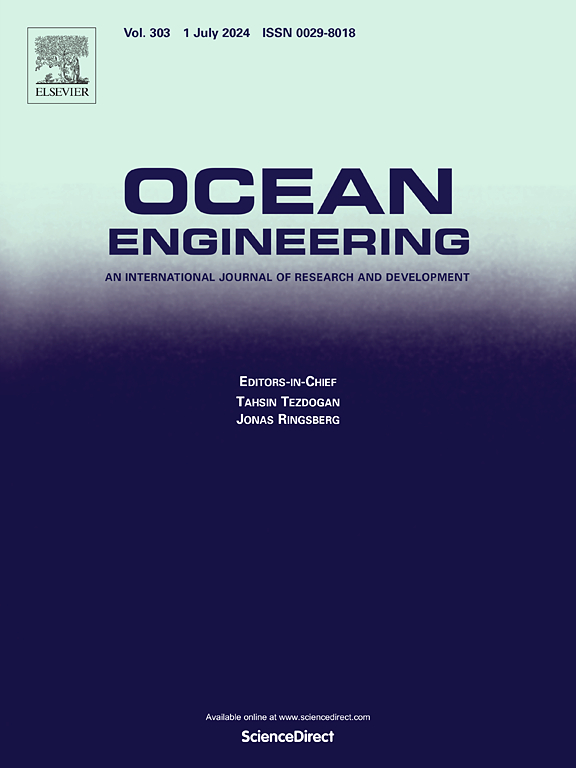海带(Saccharina latissima)养殖场的水动力模型:从海带总量到单线栽培系统
IF 4.6
2区 工程技术
Q1 ENGINEERING, CIVIL
引用次数: 0
摘要
随着大洋水域大型藻类(尤其是有孔虫纲)养殖规模的扩大,需要有适合暴露条件的优化养殖系统。为使此类系统的设计具有可量化的可信度,我们在本文中为海带养殖场开发了一种高保真水动力建模技术,为海带聚集体引入了等效海带元素,并采用了基于雷诺数的阻力系数。在对模型海带聚集体进行牵引试验验证模型后,将其与缅因州萨科湾具有两个系泊连接的单线养殖系统的综合现场数据集进行比较。在西系泊线上,模型得出的张力比测量张力大 23.3%,但在东系泊线上,模型得出的张力比测量张力小 23.2%。这些差异可能是由于模型配置和输入的不确定性造成的,原因是很难量化确切的长线方向、锚-锚距离、海带长线沿线的水流减弱、海带质量密度和绳索轴向刚度。敏感性分析表明,解决这些不确定性问题可以改进模型技术。尽管如此,所开发的模型在应用于海带养殖场的设计、安装和管理时仍具有可靠的安全系数。本文章由计算机程序翻译,如有差异,请以英文原文为准。

Hydrodynamic modeling of kelp (Saccharina latissima) farms: From an aggregate of kelp to a single line cultivation system
With the expansion of macroalgae aquaculture in oceanic waters, especially of order Laminariales, a need exists to have optimized cultivation systems suitable for exposed conditions. To enable the design of such systems with a quantifiable level of confidence, in this paper, we developed a high-fidelity hydrodynamic modeling technique for kelp farms by introducing equivalent kelp elements for kelp aggregates with Reynolds number-based drag coefficients. After validating the model with towing tests for model kelp aggregates, it was then compared with comprehensive field datasets for a single line cultivation system with two mooring connections, in Saco Bay, Maine. The model yielded a larger tension than the measured tension by 23.3% on the west mooring line but a smaller tension by 23.2% on the east mooring line. The discrepancies may be caused by the uncertainties in the model configuration and input due to difficulties quantifying exact longline orientation, anchor-anchor distance, current reduction along the kelp longline, kelp mass density, and rope axial stiffness. Sensitivity analysis indicates that addressing these uncertainties may improve the model technique. Even though, the developed model is still reliable with a safety factor in the application for the design, installation and management of kelp aquaculture farms.
求助全文
通过发布文献求助,成功后即可免费获取论文全文。
去求助
来源期刊

Ocean Engineering
工程技术-工程:大洋
CiteScore
7.30
自引率
34.00%
发文量
2379
审稿时长
8.1 months
期刊介绍:
Ocean Engineering provides a medium for the publication of original research and development work in the field of ocean engineering. Ocean Engineering seeks papers in the following topics.
 求助内容:
求助内容: 应助结果提醒方式:
应助结果提醒方式:


